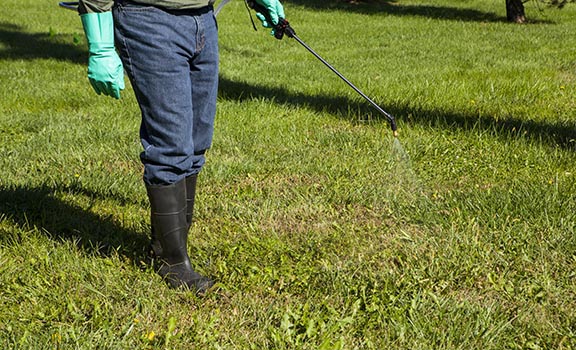Pre-emergent herbicides are an important tool in any lawn care program, but correctly timing the application can be tricky. Some climates are so unpredictable they require split applications, in both winter and late summer, to garner the best control.
Applying a pre-emergent too early can allow time for weeds to germinate and grow after the residual barrier has dissipated. Applying too late counteracts the purpose of using a pre-emergent in the first place by missing the optimal application window.
You can avoid these mistakes by developing a weed control strategy, learning about what pre-emergent herbicide can and cannot accomplish and knowing when to apply pre-emergent for the best results. Here’s how:
1. Develop your weed control strategy
 When you're developing a weed control strategy, it is important to inform your customer that it's not possible to completely eliminate weeds with a single application or cultural practice. There is no "cure-all" that prevents all weeds from germinating.
When you're developing a weed control strategy, it is important to inform your customer that it's not possible to completely eliminate weeds with a single application or cultural practice. There is no "cure-all" that prevents all weeds from germinating.
Weeds have a survival strategy and can’t be completely eliminated. Seeds can lay dormant for years before they germinate, surviving drought, fire and even other herbicide applications. Even if you were to remove all the unwanted seeds, they can easily be re-introduced to the property by wind, water, animals or human activity.
So, as you develop or adjust your weed control strategy, it's important to ask yourself the following questions:
- What weeds do you want to control?
- Is the goal to prevent these weeds, to kill them or both?
- Are there cultural (plant care) practices that could help reduce the presence of the weeds?
- What is the life cycle of the weed, and when is the proper timing for a pre-emergent herbicide application?
- What desired plants are on the property, and are the herbicides you're considering safe/labeled for use around those plants?
2. Understand how pre-emergents work
Pre-emergent herbicides are designed to control germinating weed seeds. As its name suggests, pre-emergent is targeted towards weeds that have not yet emerged from the soil.
It’s very important to understand that pre-emergent weed control products are not designed to control existing weeds or their seeds. When you use pre-emergents, weeds will only be killed when they begin to germinate and hit the herbicide barrier.
It is possible for weed seeds to remain dormant and not be harmed by the pre-emergent herbicide application. There will always be seeds under the soil surface and a portion will germinate each season. This is why weed control is a constant process. Annual applications must be made to significantly reduce major weed growth.
Sometimes pre-emergent herbicides can also affect desirable plants, including turf. Take caution if you're applying pre-emergent and seeding the turf in the same season. In general, you can seed at least four months after the pre-emergent has been applied. You should wait at least six weeks after seeding to apply any pre-emergent to allow for lawn seed establishment. And always read the pre-emergent label for proper use.
3. Time your pre-emergent applications right
To know when to apply pre-emergent herbicide, it is important to know how weeds are classified. There are two of the main classifications and when to address them:
Summer Annuals
Most well-known example: Crabgrass
 Crabgrass
Crabgrass
Other examples: Lambsquarters, Mallow, Pigweed and Spurge
Life cycle: One year with germination in the spring. They flower and produce seed, then die in fall.
Pre-emergent timing: Early spring, or late winter for southern and coastal U.S.
Winter Annuals
 Poa Annua
Poa Annua
Most well-known example: Annual Bluegrass (Poa Annua)
Other examples: Henbit, Chickweed and Mustards
Life cycle: One year with germination in the fall. They flower and produce seed quickly, then die in spring.
Pre-emergent timing: Late summer/early fall. General rule of thumb is by September 15.
Remember that weed control is a continuous process. A healthy lawn will be more weed resistant, so be sure to practice good turf care. Timing your pre-emergent applications correctly will make them as effective as possible, so be prepared.
To learn more about the pre-emergent herbicides available in your area, contact your local Ewing store.




